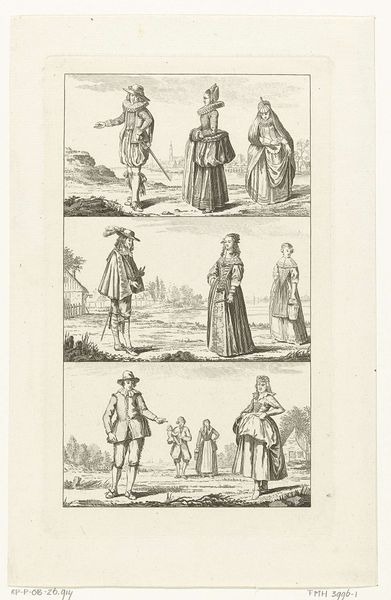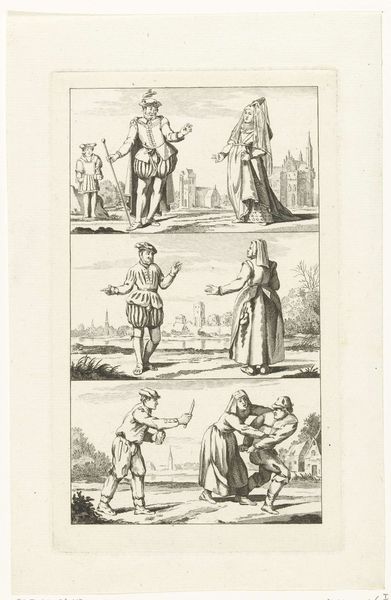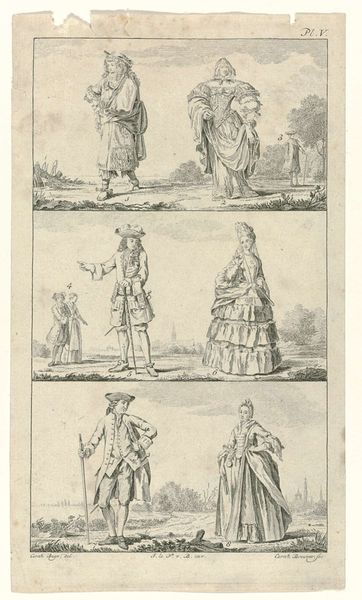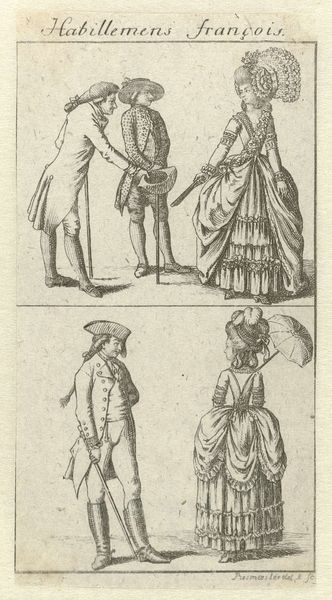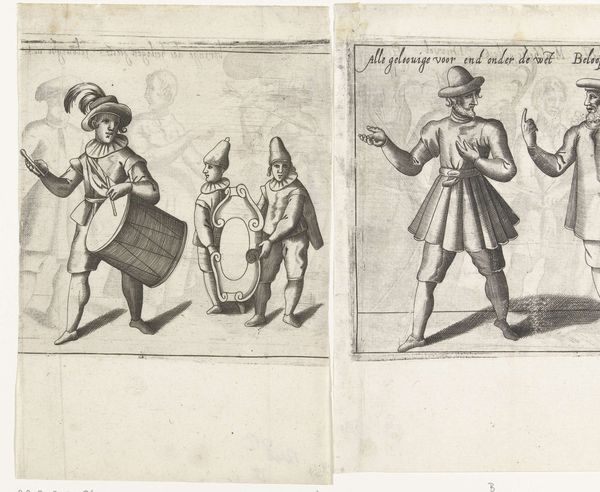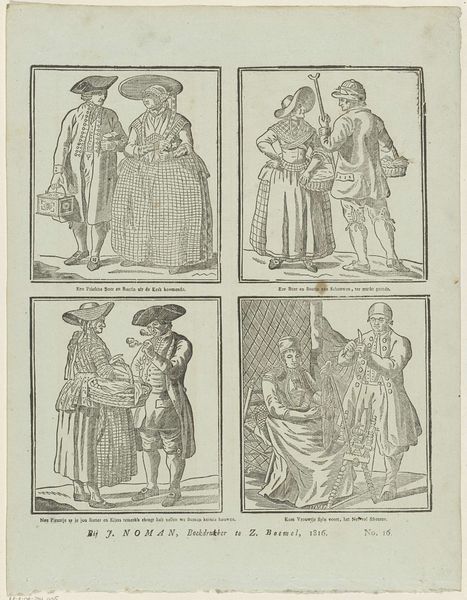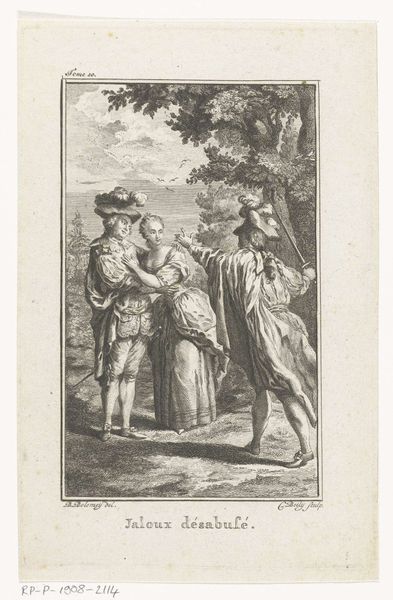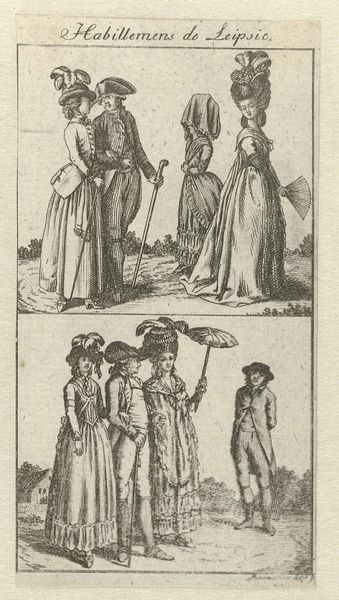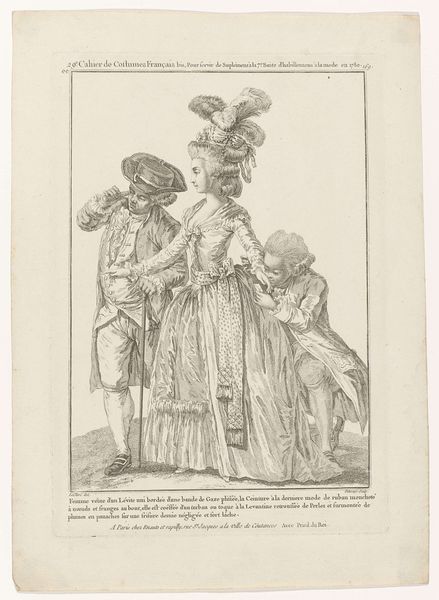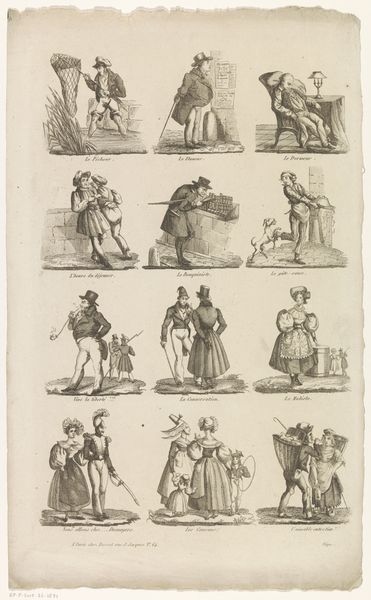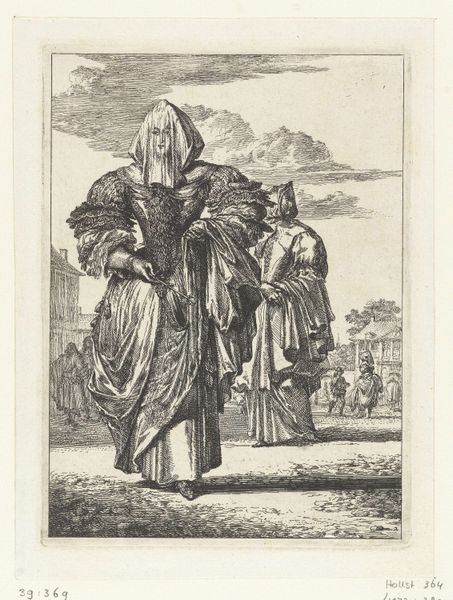
Drie landschappen met mannen en vrouwen in Hollandse klederdrachten, ca. 1775 1776
0:00
0:00
print, etching
#
portrait
#
dutch-golden-age
# print
#
pen illustration
#
etching
#
landscape
#
genre-painting
Dimensions: height 199 mm, width 121 mm
Copyright: Rijks Museum: Open Domain
Editor: This etching, titled "Drie landschappen met mannen en vrouwen in Hollandse klederdrachten, ca. 1775" by Cornelis Brouwer, showcases Dutch attire across three scenes. It feels like a study of social classes in landscape settings. How do you interpret this work? Curator: These carefully delineated figures in their distinctive costumes do more than just depict fashion. Think of them as visual signifiers of social roles within the rigid hierarchies of 18th-century Dutch society. Consider the implications of Brouwer presenting these individuals in a multi-paneled print, almost like specimens in a catalog. What power dynamics do you think might be at play here? Editor: So, you’re suggesting that it's not just a depiction of clothing but a commentary on social structure? Curator: Precisely. The artist is framing individuals within the social landscape of the time. Remember, these images were consumed by a specific audience, likely elites. The clothing, landscapes, even the gestures of the figures, contribute to constructing and reinforcing social identities and perceived worth. Notice how they're somewhat detached and lack emotional depth. What does that say about the artist's intention? Editor: That makes me consider if the lack of emotion and formal poses served a didactic purpose of portraying the rigidness of Dutch society? Curator: It could also subtly reinforce existing power dynamics and even invite a critical reading of those conventions. Do you think these images romanticize or critique the established order? Editor: It’s a thought-provoking piece. I had initially only considered the landscape aspect but didn’t engage with how the class dynamics shape what is depicted. Curator: Exactly. Context matters. Seeing art through an intersectional lens allows us to reveal its layered meanings and its active role in shaping cultural narratives.
Comments
No comments
Be the first to comment and join the conversation on the ultimate creative platform.
